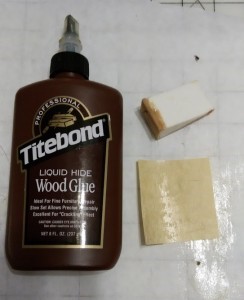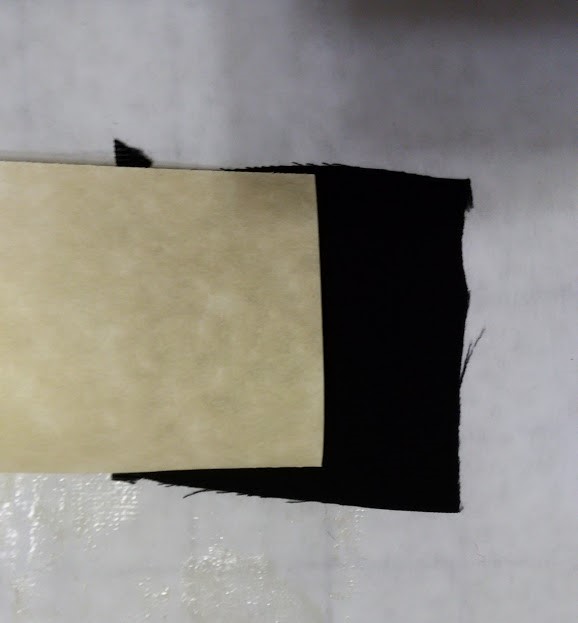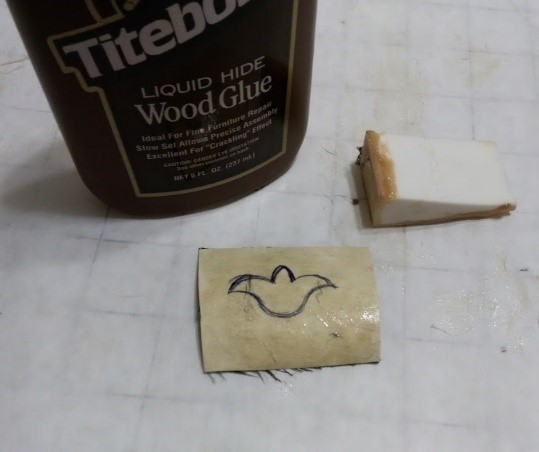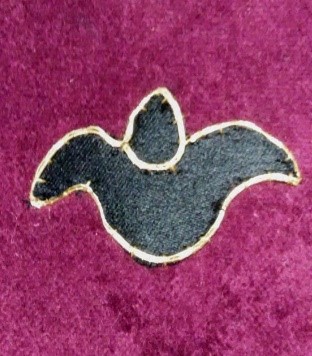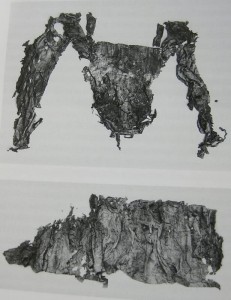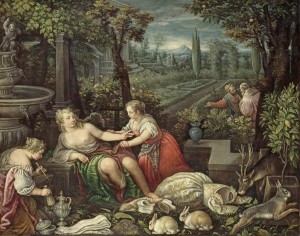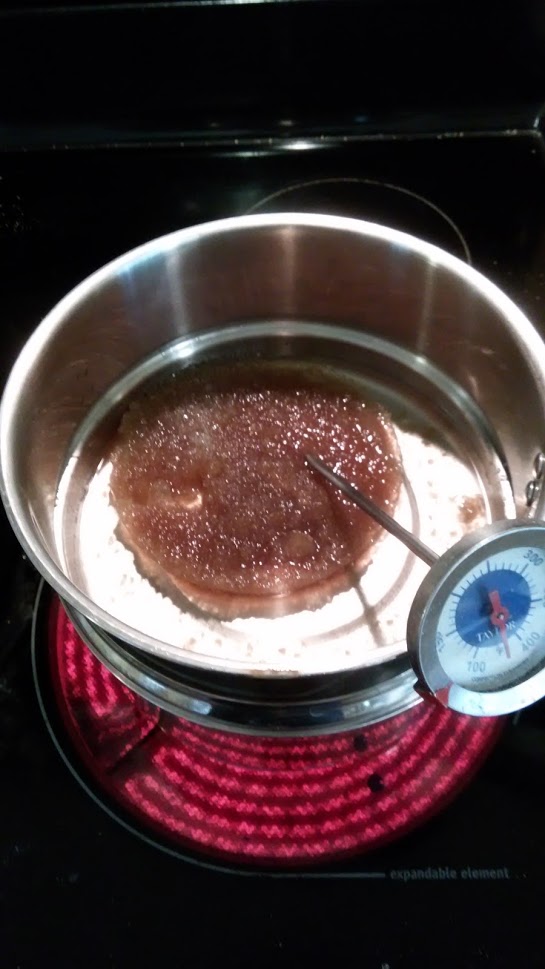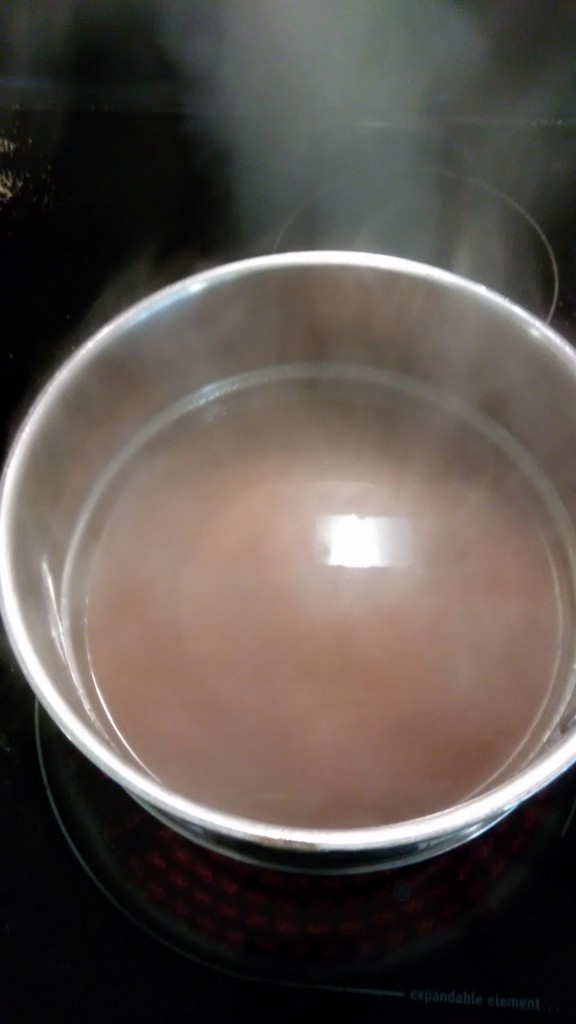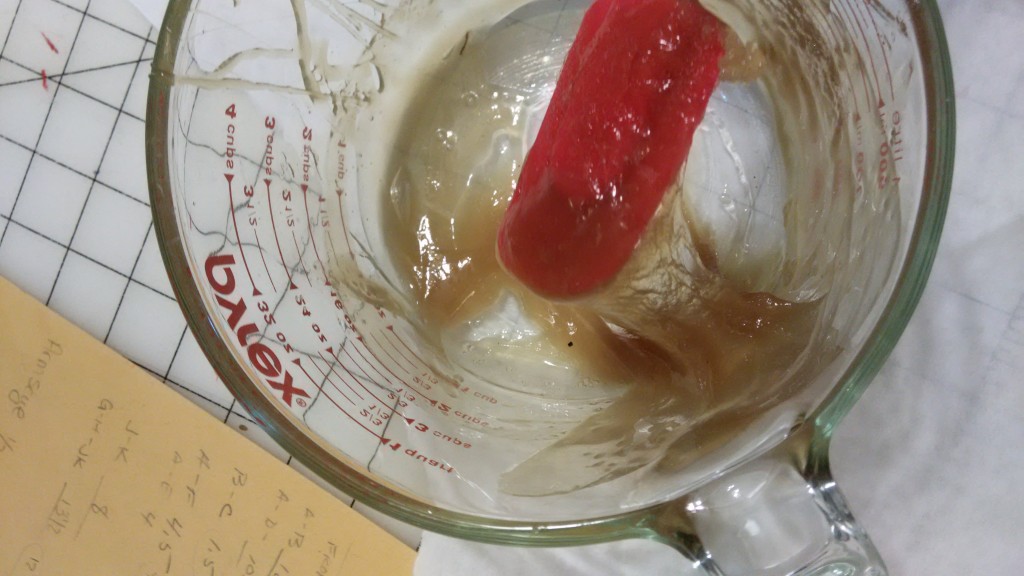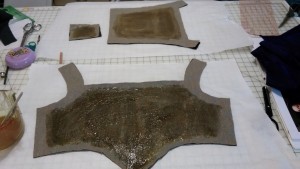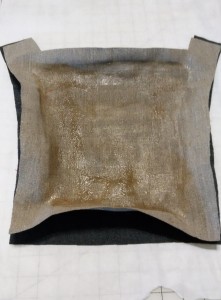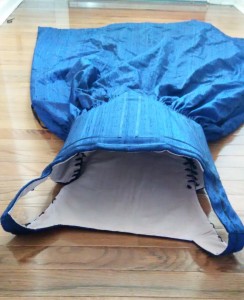Hide glue is an adhesive made by extracting the proteins in the bones, skins, horns and hoofs of animals into a gelatin material. Once applied and cured, it can be reactivated using heat and moisture. In the 15th century, Cennini noted the making of various glues including the following,
“And there is a glue which is known as leaf glue; this is made out of clippings of goats’ muzzles, feet, sinews, and many clippings of skins. This glue is made in March or January, during those strong frosts or winds; and it is boiled with clear water until it is reduced to less than half. Then put it into certain flat dishes, like jelly molds or basins, straining it thoroughly. Let it stand overnight. Then, in the morning, cut it with a knife into slices like bread; put it on a mat to dry in the wind, out of the sunlight; and an ideal glue will result. This glue is used by painters, by saddlers, and by ever so many masters, as I shall show you later on. And it is a good glue for wood, and for many things.”
This makes it ideal for its most common use today in woodworking. However, these properties also make it ideal for use in clothing.
In Janet Arnold’s Patterns of Fashion: 1560-1620 she briefly mentions glue and paper backed appliques. “The gown is embroidered with black satin motifs and couched black cords. Each motif is glued to a piece of paper to prevent fraying, cut out and mounted on the velvet, then outlined with black cord.” She does not specify which type of glue was used. While there are many types of glues in the 16th century, hide glue seems the most plausible to me. Wheat pastes can attract bug and molds. Cheese glues and fish glues smell horrendous. Because hide glue can be reactivated with heat and moisture, it could be used to create appliques without the glue soaking through the fabrics!
Embroidery
For my first experiment I used Titebond brand glue purchased from Ace hardware.
1) I used a makeup sponge to apply a thin layer of glue to paper and let it dry. 100% linen paper made from recycled shirts and other worn items of clothing would be the most likely type of paper used for this. It’s rather expensive, so I substituted 100% cotton rag paper. Using cotton paper vs plain paper makes a difference and the resulting applique is easier to sew. ( Figure 1)
2) I put the glue side of the paper to the back side of silk satin, then ironed it on high heat with steam until the glue reactivated enough to stick. Let it cool / dry. (Figure 2)
3) Draw the applique design in reverse. The design could also be drawn before applying the glue in step 1. Apply a thin layer of glue to the back of the silk and paper combo. Let it dry. (Figure 3)
4) Cut out the design. Iron it onto the ground fabric. Let it dry. From there I was able to do the applique using couched Japan #7 and silk thread. The applique was much easier to do this way. (Figure 4)
figure 1
figure 2
figure 3
figure 4
• Titebond glue worked really well for this application. However, it’s not exactly period as it has some additives. It also smells terrible, though the scent dissipates. Latex makeup sponges are also not period, a paint brush is more appropriate to apply the glue.
• Ironing the appliqué on to the ground fabric can be problematic when using velvet as the iron will crush the pile. To avoid this, the appliqué should be cut out before applying the glue to the back, then placed on the velvet while still tacky to finish drying.
• The glue did not reactivate simply by being in hot humid weather.
• The finished appliqué holds up well to being bent and crushed making it excellent for use in costuming that will be worn.
Clothing
When discussing the funeral dress of Giulia Varano of Urbino , Anea Arnesen provided her own translation of I della Rovere, which states:
“The bodice was stiffened by two layers of padded linen hardened with (probably animal) glue placed between the outer fabric and the taffeta lining, and it had a wide, square neckline typical of Italian Renaissance dresses.”
In addition to the funeral dress, in the painting “Susana at Her Bath” by Lenardo Bassano, there is a dress with a bodice that retains its shape while lying unworn. ( Bottom left figure 6)
Noting the terrible smell of the Titebond glue, it is not the best option for use in bodices or other stiffened clothing. For this application I used hide glue granules and reactivated them. This is done in exactly the same way as making jello.
The amount of glue desired is sprinkled over cold water and allowed to bloom. When it is a hydrated lump, heat it with water until liquid. More water makes thinner glue, less makes thicker. Care should be taken that the glue and water are not heated above 145 degrees F.
Figure 7 Glue hydrated.
Figure 8 Glue melted.
Figure 9 Glue thickening as it cools.
The glue is then applied to linen canvas. Do not put glue on areas in which you will need to cut button holes or make eyelets. Let it dry.
After drying, the linen will have puckered a bit. This is easily solved with a steam iron. To prevent bleed through of the glue, the glued linen is sandwiched between two layers of wool flannel. This flannel also serves to soften the hard lines created by the stiffened linen.
This wool and linen sandwich then becomes the interlining of the garment. When complete, the bodice can be gently warmed and will conform to the body as it cools. This results in a dress that looks remarkably similar to the stiffened dress in the Bassano painting. I would like to note that based on the resulting gown, the glue should extend to the very top and bottom edges of the linen canvas to prevent the drooping seen here. In this gown I did not stiffen the straps, however I have done so in another gown with good result and would recommend it. While one of the excellent properties of the hide glue is its flexibly in the presence of heat, when very cold it can become brittle. Tightening the bodice in 17 degrees F resulted in the glue cracking at the waist line.
Bibliography
Funeral Dress of Giulia Varano of Urbino, died 1547.
Arnesen, Renaissance stays. (n.d.). Retrieved May 18, 2015, from http://aneafiles.webs.com/renaissancegallery/stays.html
Arnold, Janet. Patterns of Fashion: The Cut and Construction of Clothes for Men and Women, C1560-1620. London: Macmillan, 1985, pg. 11
Bassaro, Lenardo. Susanna at Her Bath. 1592. Oil on canvas. Height: 116 cm (45.67 in.), Width: 145 cm (57.09 in.) Alte Pinakothek – Bayerische Staatsgemäldesammlungen (Germany – Munich)
Cennini, Cennino d’Andrea. “The Craftsman’s Handbook (Il Libro dell’Arte)”, trans. By Daniel V. Thompson, Jr. Dover Publications, Inc., New York. 1960.

